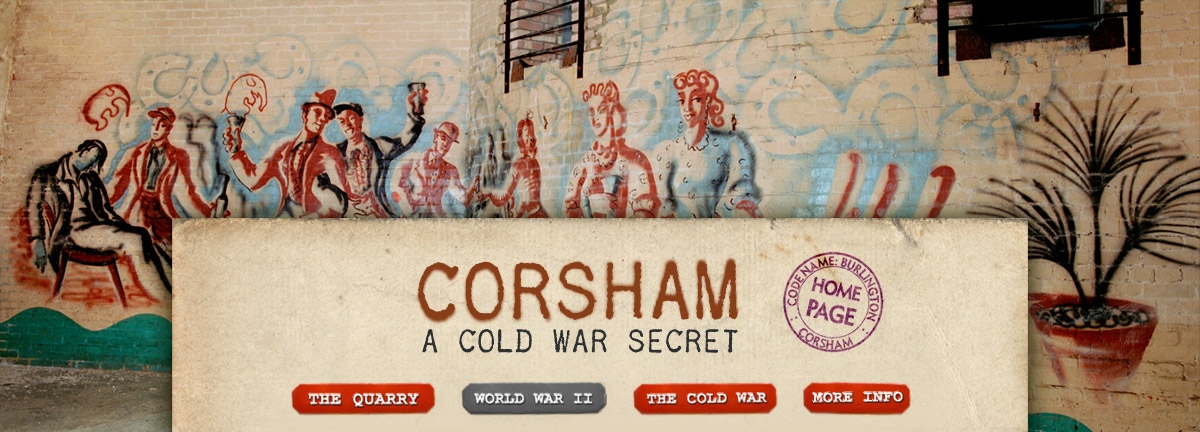| |
World
War Two
The
advent of the Second World War signalled the most extensive phase
of development within Corsham including Tunnel, Spring, Browns,
Copenacre and Pickwick quarries. Operationally they functioned as
separate entities but were dictated by the change in military threat
with the Second World War.
Tunnel
Quarry
In the 1930s the War Office began investigating underground sites
for storing ammunition, and attention was drawn to Tunnel Quarry.
It was in many ways ideal with 44 acres of storage space directly
connected to the GWR main branch line that entered a side tunnel
at the east portal of Box Tunnel. Today, it retains a high level
of survival including its 10 storage districts separated by concrete
blast walls comprising 3-acres each, an underground railway and
platform, conveyor belts for
moving ammunition, huge ventilation
fans, generators and barracks.
At the west end of Tunnel Quarry was situated the south-west Signals
Centre which survives less well, having continued in use for communications
into the 21st Century. It began operation in 1943, and at this time
it was one of three main signals centres in operation. In 1965 it
ceased to be a station, coming under the umbrella of RAF Rudloe
Manor and in this role saw a steady growth in its communications.
Browns Quarry
Browns Quarry developed as a small independent quarry at the north-west
of Tunnel Quarry; it came into operation in 1940 under No.10 RAF
Fighter Group and was responsible for air defence of the western
region. By 1950 Browns Quarry was selected to be the new Southern
Sector Operations Centre, and the quarry continued in operation
into the Cold War forming the HQ of the Controllerate of Defence
Communications Network. Today, little remains of the Second World
War use of the quarry as the Operations Room was gutted, and the
remaining areas are empty shells.
Spring
Quarry
The advent of aerial warfare during the First World War brought
with it the increasing demand for the mass production of fighters
and bombers of standard design. By 1942, it was decided to locate
the Bristol Aeroplane Company’s development works and the
manufacturing of Centaurus engines below-ground at Spring Quarry,
as well as the manufacture of undercarriages, gun barrels and turrets.
The lifespan of the works was short-lived, and production ceased
in 1945. Today, evidence of the works survives particularly the
lifts and escalators used to transport the workers, and the large
canteens containing striking murals
by Olga Lehmann.
|
|



